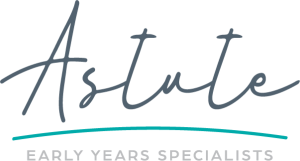Well the end of the year is already fast approaching… Christmas parties, end of year concerts, packing up, getting the children ready for school, parent teacher interviews and someone where in all of that – we are expected to write a personalised transition statement for each child!
But, can you really write transition statements that matter without the stress each year?
What can we do to make this season easier? Run away to Europe? Nice idea but probably not practical. So, let’s think about transition statements – be prepared, take time to think about why we do this, what you want to say and consider the use a tool to support you.
Before we get to the practicalities of writing transition statements, let’s take a moment to pause, step back and think.
Why do we do this? Why spend hours of our time (both at work and at home) writing about each child? Who are we writing for? Does anyone even read our statements?
Everyone will have their own answers to these questions but there are some common ideas that we can all share:
- We write to document children’s learning
- We write to share information with families about their child’s development
- We write to provide school teachers with information which will help our children to have the best transition to school
- We write to share our summary of the Kindergarten / Preschool year
- We write to deepen our understanding of each child and to take time to reflect
- We write transition statements because they are required in some states as part of our Kindergarten or Preschool Funding
Preparing to write a good transition statement starts at the beginning of the year and continues throughout. As we work with each child we will be noting their progress across the learning and developmental areas using observations, learning stories, assessments etc. By this time of year we will have a clear idea of how each child is progressing and developing in each learning area.
Term 3 is a good time to step back and look at each child’s overall development using a tool such as the one from ACECQA (https://www.acecqa.gov.au/sites/default/files/2018-02/DevelopmentalMilestonesEYLFandNQS.pdf).
This gives a clear picture of each child’s development in relation to the milestones for their age. You may want to adapt this to suit your centre so it more accurately reflects the children in your group. This tool also gives us a pretty good idea of the school readiness of each child.
You can highlight the milestones in different colours to make it easy to see the child’s development. For example, things they can do well are highlighted in green, things they are still developing in yellow and things you have not seen developing in pink.
The Transition Statement will contain 3 parts, the child contribution, family contribution and teacher contribution. Take some time to consider the families and children that you work with and how you can best get their input.
Ideas for child contribution
- Send home a document for the child to complete at home
- Interview the child at Kindergarten / Preschool
- Get the child to draw a picture to answer the questions
Ideas for family contribution
- Send home a document for the families to complete
- Complete the document with families at drop off or pick up
- Make the document digital (eg using google forms) and have the families complete online
Everyone will have their own way of actually getting the teacher contribution of transition statement complete. I find the biggest table I can and sit down with all of my paperwork.
I will have:
- samples of the child’s work
- learning stories and documentation from throughout the year
- notes from conversations with other educators
- notes from parent teacher interviews and
- my checklists and developmental summaries.
I start by writing a few sentences about each child, capturing their personality and favourite activities at Kindergarten / Preschool. I also make a few suggestions about how to help the child settle into school.
At the end I print two copies of my teacher contribution, photocopy the family and child contribution and compile them and distribute to the family and school (with permission). I also scan a copy of the child and family contribution for my records.
I find that while writing transition statements can seem like ‘just another job’ that I have to squeeze in at a busy time of year, however if I pause and reflect, I can see there is real value in them. Transition statements help facilitate a positive transition for children, they inform families and teachers and they help me to reflect and develop as a teacher.
Top Tips
- Collect all the information needed before you start
- Remember to write from a ‘strengths based’ perspective
- Think about the most important things that you want to convey to the family and school to help the child to have a positive transition
- Think of ways to engage families to complete the family contribution section
- Bring chocolate!
If you need help writing transition statements or developing your transition to school program, reach out to us, we are happy to help.
